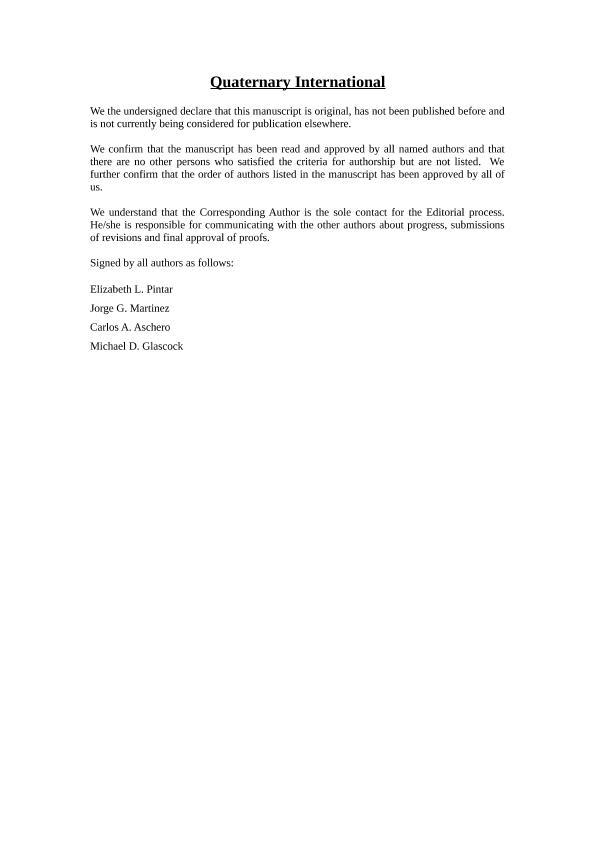Artículo
Obsidian use and mobility during the Early and Middle Holocene in the Salt Puna, NW Argentina
Fecha de publicación:
11/2016
Editorial:
Pergamon-Elsevier Science Ltd
Revista:
Quaternary International
ISSN:
1040-6182
Idioma:
Inglés
Tipo de recurso:
Artículo publicado
Clasificación temática:
Resumen
We discuss the use of obsidian as a tool to understand the mobility range of hunter-gatherers living in a high-elevation desert in the Salt Puna, specifically in the area of Antofagasta de la Sierra, Catamarca, between ca. 9000 and 6000 BP. XRF analyses of a vertical sample of obsidian artifacts pertaining to Early and Middle Holocene contexts from three archaeological sites show the use of various sources within a range of 40–95 km respectively from the study area. Our analyses suggest that mobility patterns during the early colonization phase (Early Holocene) of this high elevation region included two sources located in the eastern and northwestern areas of the Salt Puna and reveal a process of landscape learning. By contrast, during the phase of effective occupation (Middle Holocene) —a period coinciding with climatic fluctuations and decreasing rainfall—a greater number of obsidian sources were used suggesting increased knowledge of the landscape as well as a pattern of territorial range shifting.
Palabras clave:
Hunter-Gatherers
,
Middle Holocene
,
Mobility
,
Obsidian
,
Projectile Points
,
Salt Puna
Archivos asociados
Licencia
Identificadores
Colecciones
Articulos(ISES)
Articulos de INST.SUPERIOR DE ESTUDIOS SOCIALES
Articulos de INST.SUPERIOR DE ESTUDIOS SOCIALES
Citación
Pintar, Elizabeth Lucia; Martinez, Jorge Gabriel; Aschero, Carlos Alberto; Glascock, Michael D.; Obsidian use and mobility during the Early and Middle Holocene in the Salt Puna, NW Argentina; Pergamon-Elsevier Science Ltd; Quaternary International; 422; 11-2016; 93-108
Compartir
Altmétricas




